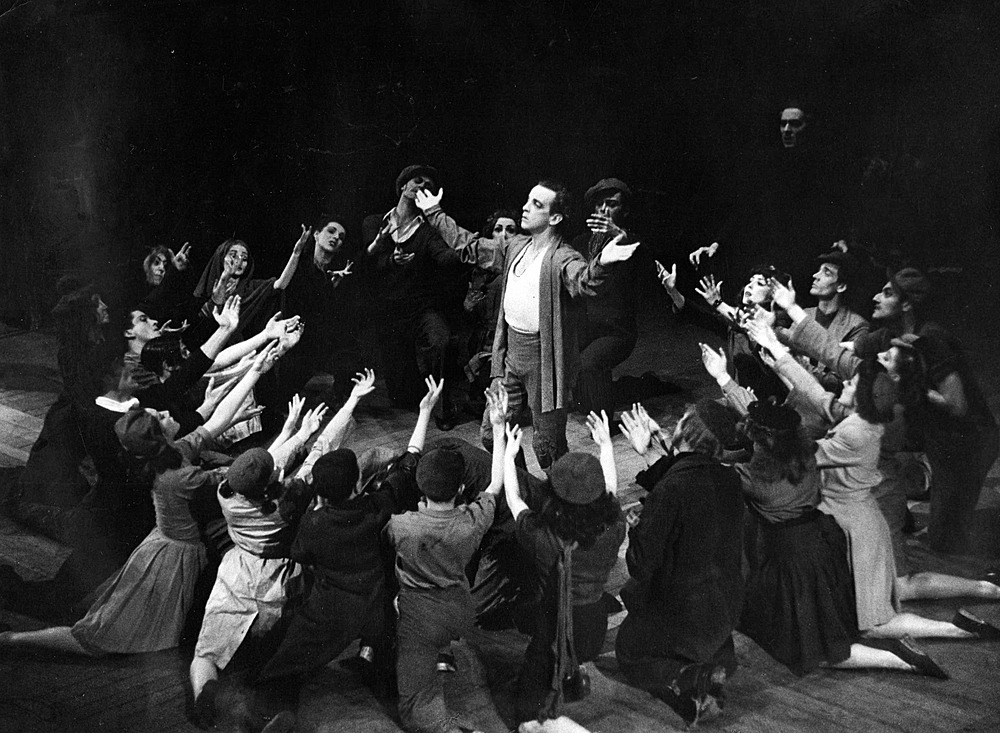people » Robert Helpmann
Robert Helpmann (1909–1986). Australian dancer, choreographer, actor and director
Robert Helpmann (originally Helpman) first appeared on the stage in 1923 as a dancer in musical comedy, and then, after seeing Anna Pavlova perform, joined Pavlova’s company for a tour of Australia and New Zealand. He remained in Australia for several years as a dancer and actor in the troupe managed by J.C. Williamson.
In 1933 Helpmann travelled to London to study and, later that year, joined the Vic-Wells (later Sadler’s Wells now the Royal) Ballet. A highly theatrical performer, he interpreted the important role of Satan in Ninette de Valois’ Job in 1933, and the following year became principal dancer, performing opposite Alicia Markova in De Valois’ The Haunted Ballroom. He became the regular partner of Margot Fonteyn, then at the very beginning of her long career, in 1935. They were a popular pair, particularly during World War Two, and danced a large classical repertoire, as well as new creations by Frederick Ashton. Helpmann left Sadler’s Wells Ballet in 1950, occasionally returning as a guest artist, most notably as an Ugly Sister in Ashton’s Cinderella, and as the Red King in De Valois’ Checkmate. Other notable roles with the company included Dr Coppélius in Coppélia, and Carabosse and Prince Florimund in The Sleeping Beauty.
Helpmann danced in the Powell and Pressburger films The Red Shoes (1948), which he also choreographed, and The Tales of Hoffman (1950).
As a choreographer, Helpmann created ballets that were highly theatrical and often contained elements of violence. An early work for the Sadler’s Wells Ballet was Hamlet (1942), a study in motivation; the ballet began with Hamlet’s death and probed backward into his memories and last thoughts. Helpmann created the leading role in that work, as he did in such other of his works as Miracle in the Gorbals (1944) and Adam Zero (1946). Later works for The Royal Ballet included Elektra (1963). In 1965 Helpmann became co-artistic director of the Australian Ballet, a post he held until 1976, where he choreographed such works as The Display (1964) and Sun Music (1968).
Throughout his dancing career Helpmann was active in the theatre, both as an actor and as a producer and director. His first important part came in 1937–38 as Oberon to Vivien Leigh’s Titania in Shakespeare’s A Midsummer Night’s Dream, followed by Shylock in The Merchant of Venice and the title role in Hamlet. Helpmann also appeared in a wide variety of films, including One of Our Aircraft Is Missing (1942), Henry V (1944), Patrick (1978), and, most famous of all, as the Child Catcher in Chitty Chitty Bang Bang (1968). In 1950 he produced the opera Madam Butterfly for the Covent Garden Opera in London, and he also directed plays including Murder in the Cathedral (1953), As You Like It (1955), and Duel of Angels (1960). In 1973 he co-directed (with Rudolf Nureyev) and appeared in a film version of Marius Petipa’s Don Quixote. Helpmann was knighted in 1968 and died in Sydney in 1986.

